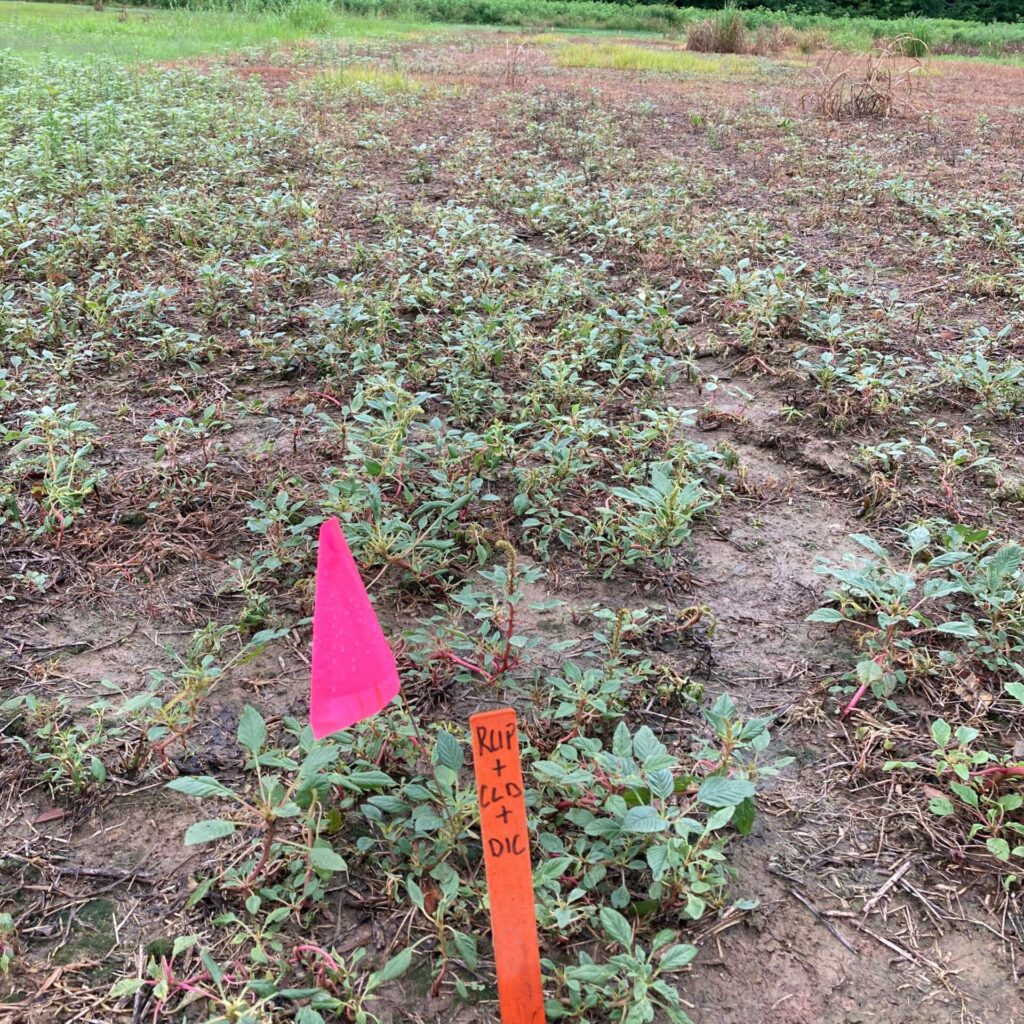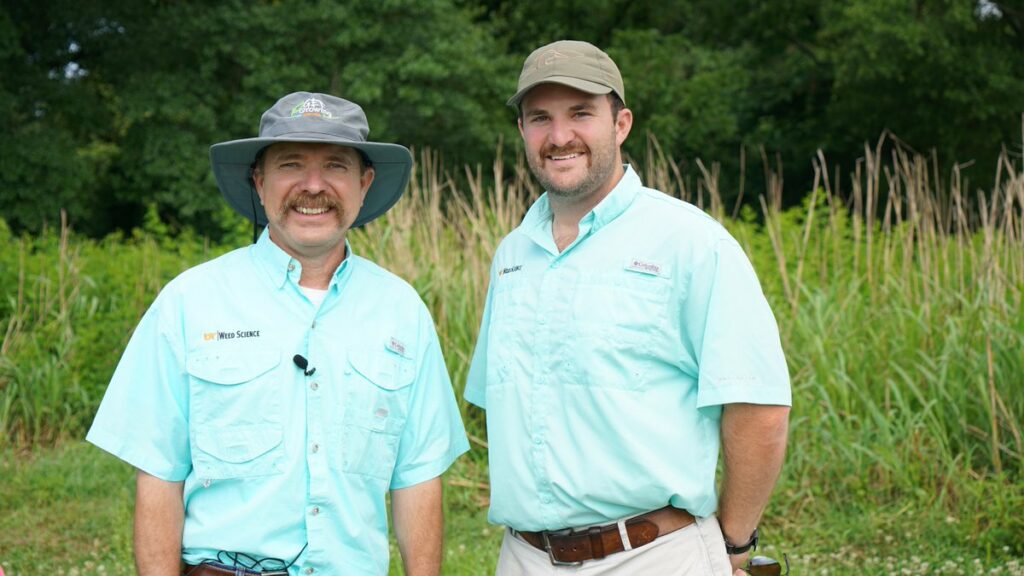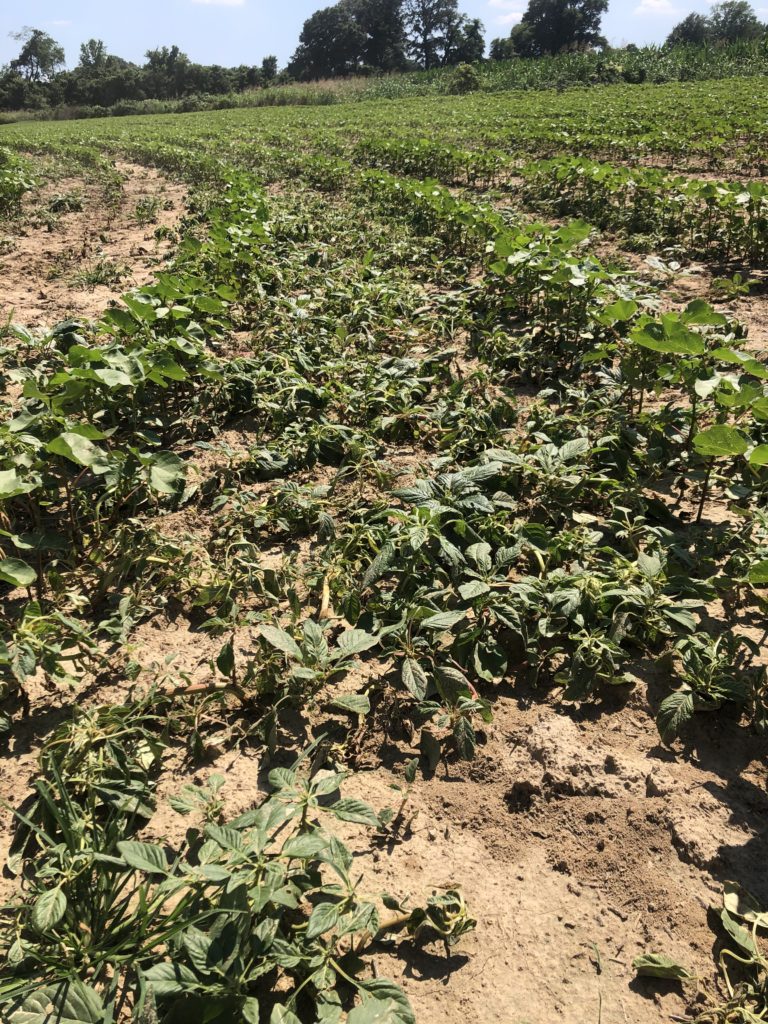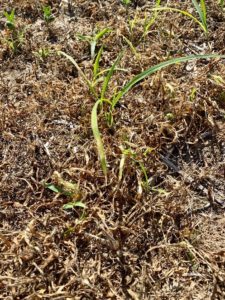There have been several reports last week of multiple glyphosate and/or clethodim applications not controlling barnyardgrass or junglerice. We really do not know the precise reasons for the lack of control in any given field but based on previous research and past experience there are three likely causes. Continue reading
All posts by Clay Perkins Postdoctoral Research Associate
Managing Dicamba or Enlist One Resistant Palmer Amaranth

Judging from research tests and walking a few farmers’ fields many of the PRE applied herbicides in soybean and cotton played out about a week or so ago. Timing is everything on trying to do the best job on Palmer amaranth that has broken through the PREs. With respect to Palmer amaranth that has low-level dicamba or 2,4-D resistance (2 to 3x), timing is even more important. Moreover, herbicide selection is also critical in controlling resistant Palmer. Continue reading
Start Scouting for Palmer Amaranth that Escapes Dicamba or 2,4-D

This picture (Picture 1) was taken just 4 days after a dicamba + glyphosate + clethodim application on 3” Palmer amaranth. Judging from some experience with this Palmer population, the growth after application would suggest it will likely survive. When we revisited the site indeed it had (Picture 2). Fields infested with similar Palmer populations are scattered about in a few counties in West and Middle TN. As such, there will be no substitute for first hand observation to determine if Palmer amaranth is recovering from a dicamba or Enlist application.
In our research more dicamba sensitive Palmer amaranth will often be dead or well on their way under good heat and moisture conditions in 7 days or so. Palmer that is showing regrowth from the apical meristem or lateral buds around 7 to 10 days after application often will live. Experience from last year would indicate that not only will they live but after a short pause will become quite competitive. Continue reading
2021 Cotton Focus Video Series: Grass Management by Dr. Larry Steckel, Clay Perkins
 Our second series of presentations for the 2021 Cotton Focus Video Series are from Dr. Larry Steckel’s program. Dr. Steckel and his PhD student, Clay Perkins, will be presenting two topics for us- the first is ‘Grass Management in Xtend and Enlist Cotton’ and the second is ‘Characterization and Management of Glyphosate-Resistant Junglerice’. We are extremely blessed to have Dr. Steckel in Tennessee and I’m excited to have these two very important topics covered, especially after the challenges we’ve faced with grasses in recent years.
Our second series of presentations for the 2021 Cotton Focus Video Series are from Dr. Larry Steckel’s program. Dr. Steckel and his PhD student, Clay Perkins, will be presenting two topics for us- the first is ‘Grass Management in Xtend and Enlist Cotton’ and the second is ‘Characterization and Management of Glyphosate-Resistant Junglerice’. We are extremely blessed to have Dr. Steckel in Tennessee and I’m excited to have these two very important topics covered, especially after the challenges we’ve faced with grasses in recent years.
You can find links to Dr. Steckel’s and Mr. Perkins’ presentations below.
Concerns About Poor Palmer Amaranth Control with Dicamba

Calls continue to come in on concerns about poor Palmer amaranth control after a dicamba application. More than a few have reported that Palmer amaranth has survived multiple dicamba + glyphosate applications (Example above). Continue reading
Junglerice Control after Initial Glyphosate + Dicamba Application

Questions continue to be asked on how to best manage junglerice, barnyardgrass and goosegrass in cotton and soybean. Research earlier this spring looking at grass control after an initial glyphosate + dicamba application showed that if a follow-up glyphosate application was applied 7 days later better than 90% junglerice control could be achieve (data below). Continue reading
Results of UT Studies on Reasons for Junglerice Becoming a Major Pest in Tennessee Xtend Cotton and Soybean Acres

The results of some studies UT Extension has done to try to determine why junglerice has become a major weed pest in Tennessee Xtend cotton and soybean acres has provided some insights. This research was in-part supported by the Tennessee Soybean Promotion Board and from Cotton Incorporated. Continue reading
Junglerice/Barnyardgrass Starting to Emerge in Tennessee

We have started to notice Junglerice/Barnyardgrass emergence here in West Tennessee on Tuesday (April 28th). The key way to ID junglerice at this young stage is the purple base and flat stem. As the grass matures, you will start to notice some purple striping on the leaves as well as not having a ligule.
